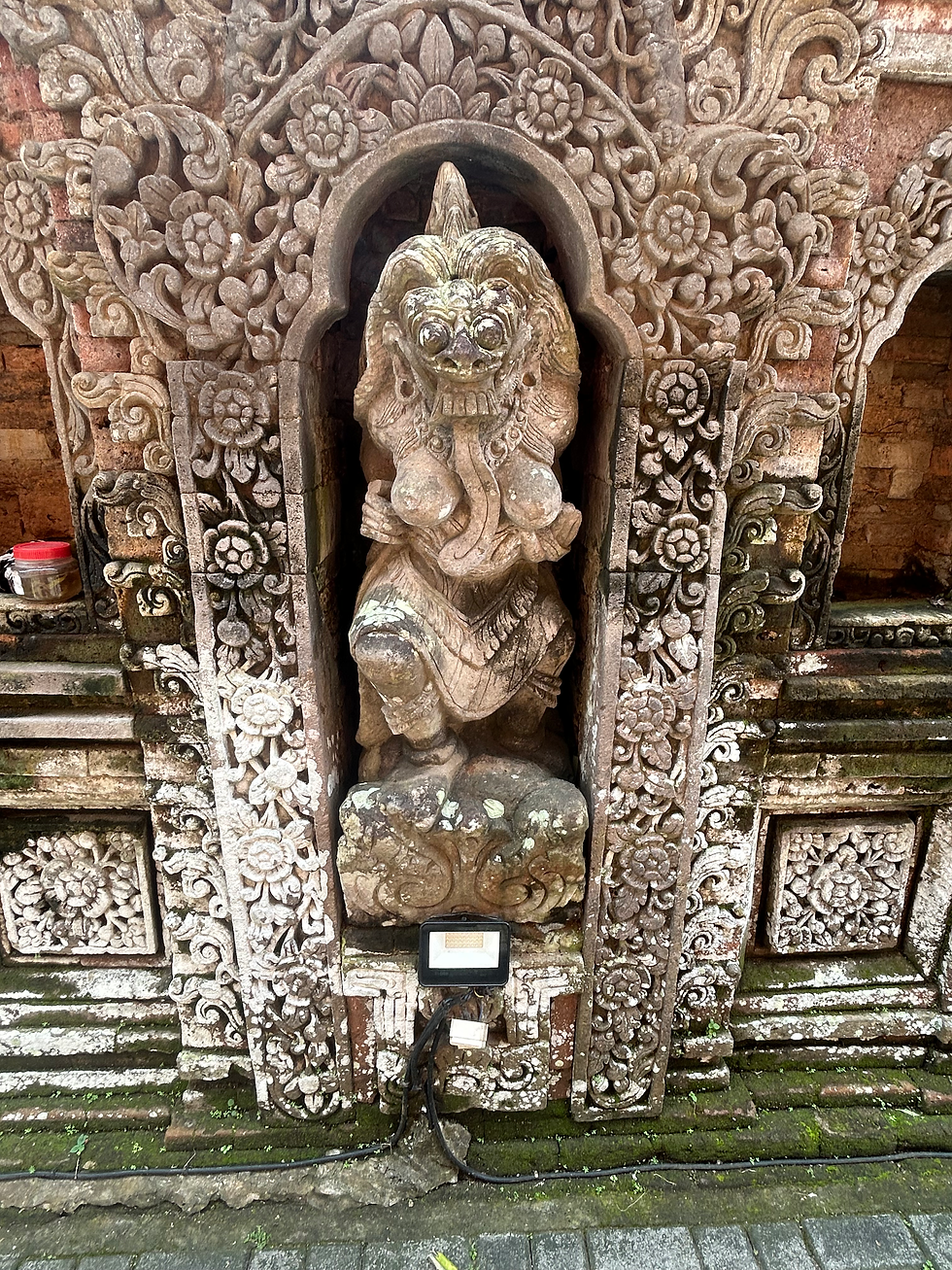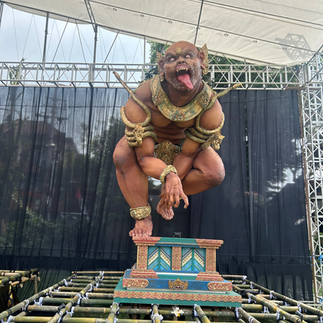Ubud - Bali, Indonesia
- v e
- Mar 31
- 3 min read
Updated: Apr 3
Date: 26th - 29 March, 2025

Ubud is a religious tourist destination in Bali. Being a larger city compared to other villages, it has many temples. As a tourist hotspot, expect a lot of visitors and traffic. Even though I visited during the off-season, there was still a significant amount of traffic. That's why I chose to stay about 6km away from the main city. My accommodation was at Gending Sari, which offers an amazing view of the rice fields, great rooms, and an excellent kitchen. The host was fabulous, assisting me with many things, sharing food, and providing great evening conversations, so don't forget to stay there.
The main attractions to explore in Ubud include the Saraswati Temple, Monkey Forest, rice fields, and Ubud Palace. I strongly advise against visiting the rice fields, as they are entirely tourist-oriented and I found them disappointing. Instead, I enjoyed the paddy fields in the villages where I stayed, as they offer the opportunity to interact with locals.

I didn't visit the Saraswati temple either because they don't permit tourists to enter, which gives the impression that Bali regards tourists as second-class. This doesn't leave a good impression. Additionally, Bali's temples aren't particularly impressive in terms of architecture, but it's your choice.
Ubud Palace is modest and worth a visit. Here are some photos of the palace.

Opposite of the Ubud palace, there is an art market place to buy souveniers for.
Paddy fields
Before the Nyepi festival, my host provided me with traditional clothing to wear so I could enter the Ubud Palace during the celebration. Unfortunately, the security denied me entry, which made me a bit sad since I had prepared for it. Here are some photos from the event.
In villages and towns, young people constructed something called ogoh ogoh, a frightening figure. During the Pangrupukan parade, ogoh-ogoh symbolizes the evils of human nature or negativity in the universe. Therefore, after the parade ends, ogoh-ogoh is eventually burned as a representation of eliminating those negative traits. Competitions are also held to determine which parts of the city created or performed the best. The ogo ogo is made of paper and wood, and these materials are used to build it.
During Nyepi, everything comes to a halt, including the airport. Only emergency services remain operational, and people are prohibited from going outside. They are also expected to refrain from using electricity, to fast, and to meditate. It is a more elaborate version of Maha Shivaratri from the Indian Hindu tradition, but I adore this Balinese tradition. In the spirit of Nyepi, I also chose to fast on that day. :). Interestingly Telugu New Year, Ugadi, is just a day later of the Nyepi. Lot of people do not know that start of spring aka April actually represents new year across various cultures both Western & Eastern cultures. It was mooon based calender unforturnely forgetten and changed to January for irrational reasons.
The place is safe and friendly, infact it is so safe that when i went to visit the ubud palace I forgot to take my scooter keys, after around 2 hours i realised i did not take the keys and when i went back to check it was still there. If it were in India someone would have stolen the bike.

These 3 cats are siblings and every day they used to sleep on my bed.













































Comments